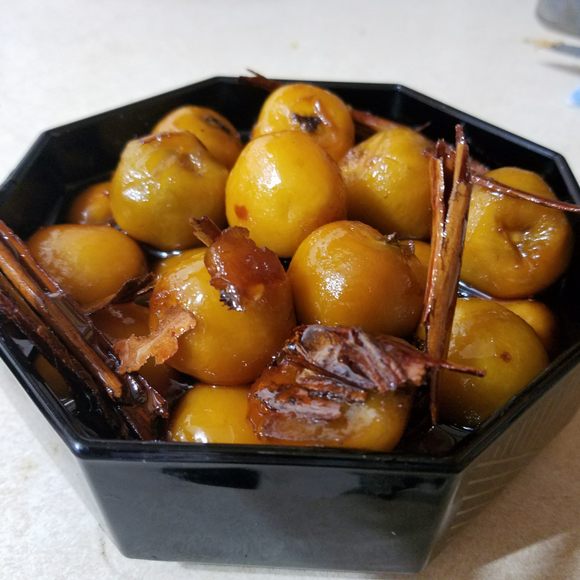Fruits & Vegetables
Tejocote
On Day of the Dead, garlands of the tiny, apple-flavored fruit serve as offerings to the deceased.
Tejocote at a glance appears to be little more than a small orange crabapple. Although they are distantly related to apples, they share a closer relation to the North American mayhaw and the popular Beijing street snack known as Chinese hawthorn.
Tejocote’s flavor is pleasant, similar to apples and guava. Like other hawthorn fruits, it’s not typically eaten fresh. Due to its hard flesh, numerous inedible seeds, and slight astringency, most people cook it in order to make it more palatable. One would hardly suspect that this tiny, apple-like fruit was once the most commonly smuggled fruit coming into the United States from Mexico.
Fruit can carry diseases and pests that can devastate the agriculture of other regions. The practice of bringing undeclared fruits into another country to be resold, known as “fruitlegging,” is a serious crime in the United States that can result in fines up to $10,000. What motivated fruitleggers to risk bringing contraband tejocote over the border is that these little fruits are used in a number of celebrations in Mexican culture.
They are the key ingredient in the beverage ponche (literally “punch”), which is consumed during Christmas and New Year’s. To make this drink, a variety of fruits and spices, including guava, tamarind, cinnamon, and cloves are mulled in water, much like a spiced cider or wine. Although some of the ingredients used are a matter of taste, tejocote is a required ingredient. Fresh fruit is best, however in a pinch frozen or jarred tejocote can be used as well.
Another popular dish during Christmas time is dulce de tejocote, where fruits are candied in spiced syrup. During Day of the Dead celebrations, participants provide candies known as rielitos and garlands made from tejocote as offerings to ancestors that have passed on. The cultural significance of this fruit makes tejocotes a highly valued item during the holiday season, one that many Mexican immigrants pay top dollar to have.
Written By
 Jared Rydelek
Jared Rydelek













